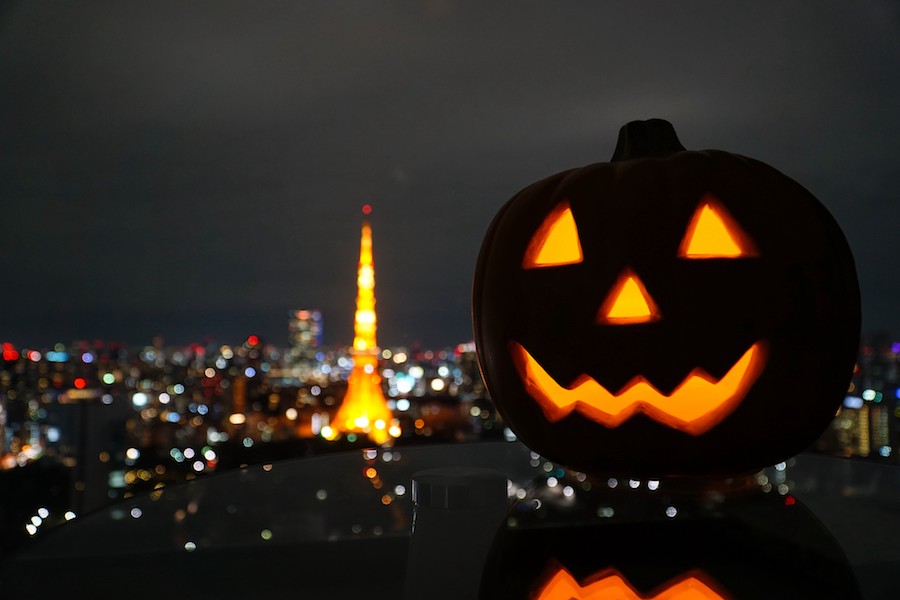
Halloween originated as the ancient Celtic festival Samhain, which was a holiday to welcome the harvest and ward off ghosts that came to visit the earth for one day. People would light bonfires and wear costumes to keep the ghosts and evil spirits away before the beginning of their New Year on November 1st. Over the years, the holiday spread in popularity from Europe to North America and transformed into the spooky and sweet holiday we celebrate today.
Though many countries do not celebrate Halloween, some have holidays or traditions that commemorate the dead, such as Día de Los Muertos in Mexico and the Hungry Ghost Festival in China. Here are some of the ways other countries celebrate Halloween or a holiday similar to it.
Ireland
Halloween originated in Europe with the ancient Celtics, and the Irish still celebrate the holiday to this day. Like Americans, children and adults dress up in costumes and go trick-or-treating. They have Jack O’Lanterns and other spooky decorations, but they also share a traditional Halloween fruitcake called barmbrack.
Traditionally, a coin, ring, and a piece of cloth are baked inside. If you find a coin in your slice, it foretells prosperity. The rag means your financial future is uncertain, and the ring signifies an upcoming romance or happiness. At dinner, the traditional Irish dish that is associated with Halloween is colcannon, a side dish made with mashed potatoes and cabbage. Inside the potatoes, they sometimes put in clean coins wrapped in baking paper as a treat for the person who finds it.
There is also a huge Samhain parade in Dublin that celebrates the ancient Celtic festival. It ends in a carnival on Temple Bar where you can watch fireworks commemorating this spooky holiday. A couple of castles like Malahide Castle and Bunratty Castle also hold festive events, such as ghost tours, spooky Halloween games, and magic shows.
Scotland
Scotland has a variety of unique Halloween traditions that have carried over for thousands of years. Instead of pumpkins in Scotland, the tradition was to carve a scary face into a turnip to ward off ghouls and ghosts wandering around. However, it’s become more common to carve pumpkins as well, thanks to America’s influence.
Another ancient Scottish tradition that has lost popularity over the years is burning nuts at Halloween for those recently engaged. Couples would each put a nut into the fire. If the nuts quietly burned, then the relationship would be a happy one. However, if the nuts hissed and crackled, that foretold a turbulent future.
China
Though China does not celebrate Halloween, they have their own holiday called the Hungry Ghost Festival, where they cook food to feed their deceased ancestors. They celebrate this holiday on the fourteenth day of the seventh month on the lunar calendar. In fact, the whole seventh month is considered “Ghost Month” because they believe the afterlife allows spirits to roam the Earth during that month, similar to the Mexican holiday Día de Los Muertos.
During “Ghost Month,” they avoid wearing red because it is said the color attracts ghosts that may want to possess your body. The Chinese also cook feasts and set out a place setting for the ghosts of their deceased family members. They also burn items like paper cars, boats, watches, or cellphones and fake money to send luxury to their ancestors in the afterlife.
Japan
Japan has only recently started celebrating Halloween. The first unofficial celebration took place in 1997, but already they have their own way of celebrating this Western holiday. Cosplay is a big part of the Japanese culture, particularly among youths, so dressing in costumes on Halloween and partying all night has become the way to celebrate. They don’t trick-or-treat since visiting the homes of strangers is considered impolite.
However, there are parades and street parties around Tokyo. Of course, theme parks with American origins like Tokyo Disneyland and Universal Studios Japan in Osaka help commemorate the holiday with spooky decorations and trick-or-treat experiences all October.
Mexico
Though it’s not technically Halloween, Día de Los Muertos, or the Day of the Dead, is one of the most well-known holidays in the United States that commemorates deceased loved ones. On November 2nd, Mexicans believe the spirits of their ancestors visit the living and take the time to honor them.
Traditions differ depending on the region, but some of the most popular (as seen in Disney’s Coco) are ofrendas, which are altars that typically have photos and possessions of loved ones, candles, flowers, toys, and water. The Aztec tradition of putting out sugar skulls and marigolds is meant to represent the fragility and cycle of life. Marigolds are also used in abundance to guide spirits to the festivities and their loved ones with their vibrant color and scent.
New Orleans
Yes, Louisiana is part of the United States, but New Orleans has a unique culture all of its own. When it comes to Halloween, there are some spooky traditions that you won’t find anywhere else in the States, like voodoo.
Voodoo is a big part of New Orleans culture due to the West African influence in the city. They hold street parties for families or just adults in the French Quarter like Krewe of Boo, a family-friendly Halloween parade with incredible theatrical floats, VoodooFest, a festival with a lineup of bands, indigenous cuisine, immersive art installations, and a beer hall, and Frenchman Street Party, a massive party popular with locals and visitors right on Frenchmen Street.

Emily currently lives in Orange County, California after spending four years in Illinois and half a year teaching in Florence, Italy. She holds a B.A. in English Literature from Knox College and an M.A. in Counseling from the University of San Diego and has taught English to native speakers and ESL students for over three years. When she’s not working as a School Counselor or writing, she enjoys traveling the world, playing instruments, and blogging about Millennial experiences at Long Live the Twenties.
